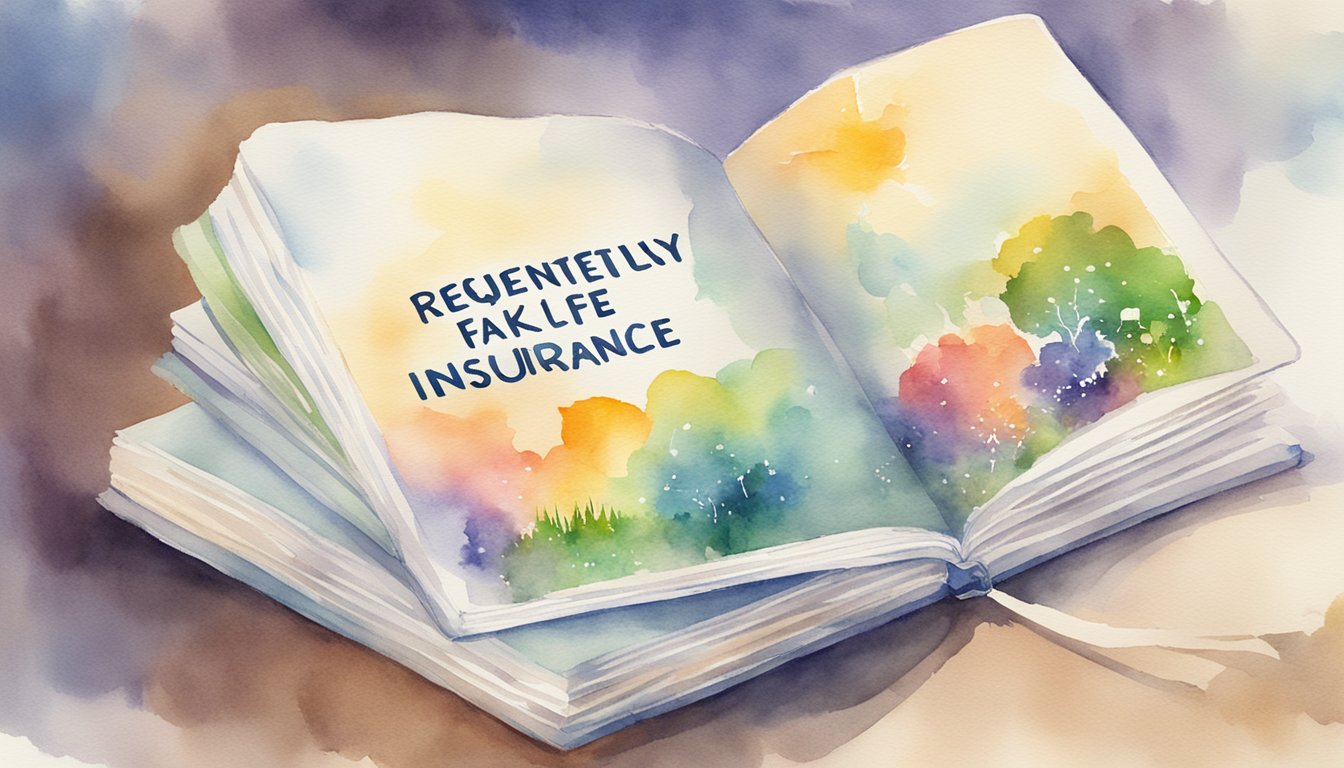Understanding Term Life Insurance
Term life insurance offers coverage for a specific period, such as 10, 20, or 30 years.
If you, the insured, pass away during this term, the insurance company pays a death benefit to your beneficiaries.
This type of insurance does not build cash value like permanent life insurance.
Key Features
- Premiums: Term life insurance premiums are typically lower than permanent policies. You pay these premiums throughout the term to keep the coverage active.
- Coverage: The coverage amount is fixed and is chosen when you buy the policy. If you die during the term, the insurer pays this amount to your beneficiaries.
- Age and Health: Your age and health at the time of application determine your premiums. You might also have to undergo a medical exam.
- Risk Assessment: Insurance companies conduct underwriting to assess risks. Factors such as your gender, health, and lifestyle affect your premiums and eligibility.
- No Cash Value: Unlike permanent life insurance, term policies do not have a cash value component. They provide pure death benefit protection without accumulating a cash reserve.
Comparisons
- Term vs. Permanent: Permanent life insurance, such as whole life insurance, includes a cash value component. You can borrow against this cash value or use it to pay premiums. Term life insurance, by contrast, focuses solely on providing a death benefit during the term of the policy.
- Flexibility: Some term policies offer conversion options. You can convert them to a permanent policy without a medical exam, though this usually increases premiums.
Considerations
- Life Changes: Life events, such as getting married or having children, might influence your need for coverage. Term life insurance can provide affordable protection during crucial years.
- Financial Planning: Consulting a financial advisor can help you determine the appropriate amount of coverage based on your financial situation and goals.
- Interest Rates and Life Expectancy: These factors might impact the cost and availability of term life insurance. Higher interest rates can lower your premiums, while longer life expectancies might increase them.
For more information on underwriting, you may refer to this definition.
Policy Details and Terms
Term life insurance is straightforward, with key features that help you understand what you are signing up for.
Term Length: Typically, policies range from 10 to 30 years.
The chosen term length affects both your premium and the policy’s overall cost.
Premiums: These are the payments you make to keep the policy active.
With a level term policy, your premium remains constant throughout the term.
Death Benefit: This is the payout your beneficiaries receive if you pass away during the term.
This amount can be used to cover expenses like a mortgage or personal debt.
Renewable: Some policies are renewable, meaning you can extend coverage after the term ends without medical exams, although the premium may increase.
Riders: You can add riders to your policy for extra protection.
Riders like return of premium or additional coverage can provide more flexibility and benefits.
Beneficiaries: It’s essential to name your beneficiaries in the policy.
This ensures that the death benefit goes to the right people, like your dependents.
Decreasing Term: This type of policy features a death benefit that decreases over time.
It’s useful for covering debts that diminish, like mortgages.
Whole Life Insurance Comparison: Unlike term life, whole life insurance provides coverage for your entire life and includes a cash value component.
Policy Lapse: If you don’t pay your premiums, your policy may lapse, ceasing coverage.
Understanding these terms helps ensure that you choose the right policy to meet your needs and provide financial protection for your dependents.
Financial Considerations and Planning

When planning for term life insurance, several financial factors come into play.
Premiums are the payments you make to keep your policy active.
Term life policies usually have lower premiums compared to permanent life insurance.
Consider the length of the term.
Policies often range from 5 to 20 years.
A 20-year term can cover long-term financial obligations like a mortgage.
The coverage amount is vital.
It should cover funeral costs, debts, and future expenses for dependents.
Think about what amount will provide sufficient financial protection.
Term life insurance can be either level term or decreasing term.
Level term maintains the same coverage amount, while decreasing term lowers coverage over time.
Renewal options are another consideration.
If the term expires and you need more coverage, renewal might be more expensive.
Some policies are convertible, allowing you to switch to permanent life insurance without a medical exam.
When comparing policies, check rates from the best term life insurance companies.
They offer various services and prices.
Remember to assess your financial obligations and choose a policy that fits your budget and coverage needs.
Consider life insurance rates and see if the cost aligns with your family’s financial plans.
Frequently Asked Questions

Understanding term life insurance involves knowing its benefits, how rates are determined by age, and what happens upon expiration.
It’s also important to compare it with whole life insurance and consider key factors before purchasing.
What are the benefits of choosing term life insurance?
Term life insurance offers coverage for a specific period, making it an affordable option.
It provides financial protection for your family if you pass away during the policy term.
The premiums are usually lower compared to permanent life insurance.
How are term life insurance rates determined by age?
Your age significantly affects the rates of term life insurance.
Younger individuals typically enjoy lower premiums because they are considered lower risk compared to older individuals.
As you age, the rates increase due to the higher likelihood of health issues or mortality.
What occurs when term life insurance reaches its expiration?
When a term life insurance policy reaches its expiration, the coverage ends.
You can choose to renew the policy, often at a higher premium, or convert it to a permanent policy.
Without renewal or conversion, there is no payout if you pass away after the term ends.
Can you explain the pros and cons of term life insurance policies?
Pros include lower premiums and straightforward coverage.
However, term life insurance has no cash value and provides coverage only for the term specified.
Once the term ends, there’s no benefit unless renewed or converted.
How does term life insurance compare with whole life insurance?
Term life insurance offers coverage for a set period, making it less expensive than whole life insurance.
Whole life insurance, in contrast, provides lifelong coverage and includes a cash value component, but comes with higher premiums.
What should one consider before purchasing a term life insurance policy?
Before buying term life insurance, consider the length of the term, the coverage amount, and your financial obligations.
Evaluate whether you need temporary protection for specific goals like mortgage payments or long-term coverage for lifelong dependents.






